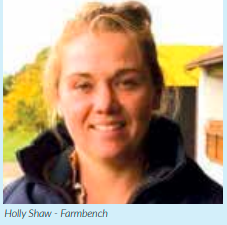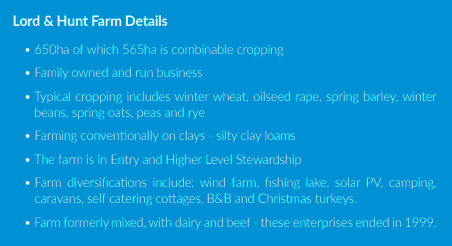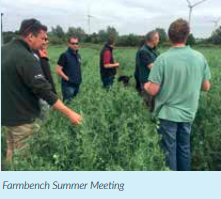Cost of production? Cash only net margin? Machinery depreciation per hectare? Holly Shaw, AHDB’s
Knowledge Exchange Manager for Benchmarking in East Anglia looks into the detail.


AHDB’s Farmbench online benchmarking tool hopes to take the mystery out of physical and financial performance of multiple farm enterprises. The updated tool now incorporates cross-sector recording, including combinable, potatoes, sugar beet, dairy, beef, lamb and forage. With many people looking to reduce costs but not to the detriment of their soils and environment, Farmbench can highlight the areas that may need review.
David Lord who farms in Clactonon-Sea, Essex, benefited from several years benchmarking to help confirm his decision to move to a Cross Slot no-till drill. David has recorded his figures since 2014, originally as part of the Colchester Monitor Farm Arable Business Group. Being able to analyse both the variable and fixed costs of the business, in particular the machinery and depreciation, made the move to direct drilling an easy sell on the business front. Over five years of recording with AHDB, David has reduced his cost of production per tonne by £24. The focus of reducing fixed costs was high priority for the business, and Farmbench helped highlight where these savings could be made. A 40% decrease on fuel consumption, is one area that has brought the cost of production down.

Discussing the figures inputted to Farmbench with other members of the business group, helped identify which were on-farm issues and issues that were typical of that growing year. This process was started off the back of the Colchester Monitor Farm benchmarking group and latterly through joining a group in South Suffolk. The detailed reports, showing the costs associated with all the combinable enterprises on farm, presented alongside others within the group and regional averages allowed greater scrutiny of the areas of high cost.
David said, “We needed to look at reducing costs with a system that didn’t compromise soil quality and enabled us to reduce weeds. The ability to discuss the figures with knowledgeable peers not associated with your business gave an outside opinion, which is often needed when deciding to make big changes.”
He continued, “analysis of your business by a third party often brings new suggestions for achieving your goal. More often than not, someone has already had a similar experience or knows of someone who has already achieved what you are hoping to. We, as a group, choose to meet twice a year – once in the winter to look solely at the figures and then again in June at one of the groups’ farm. This year, I hosted the summer meeting, which helps put into context the reason why the figures are what they are.

Using Farmbench was a straightforward process, simply entering data we already had in the farm office, but entering it in a way it can be used to compare against others, which is so useful.
The programme allows you to allocate costs across all of the enterprises on farm, either by total figure or on a percentage basis. Farmbench can be used individually to analyse specific crop performance, or to help make decisions on cropping, inputs and marketing. As part of a discussion group, farmers who are part of national groups use the tool to enable them to draw comparisons between their businesses. The strategic dairy and beef programmes, progressive beef and sheep, are currently using the programme to add benchmarking to their 3-year projects.
The Farmbench programme benefits from both a regional technical team covering all the sectors and a dedicated helpline to assist with user issues and registration. To register with Farmbench, visit: ahdb.org.uk/farmbench